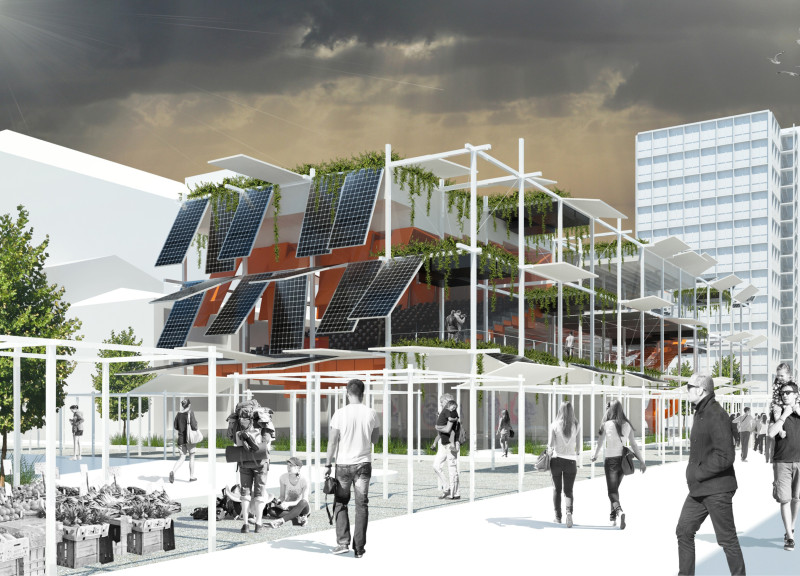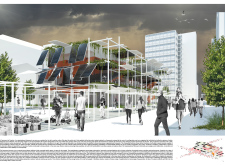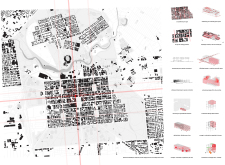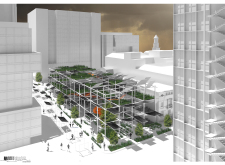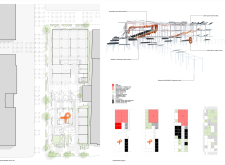5 key facts about this project
### Project Overview
This community-centric architectural initiative is located in a densely populated urban area, designed with the intent to enhance creativity and social interaction. By providing an adaptable environment, it encourages artistic endeavors and facilitates cultural exchanges among diverse user groups. The structure embodies a modern approach to urban architecture, characterized by its flexible framework that can be reconfigured to meet the evolving needs of its occupants.
### Spatial Strategy
The design employs a "Framework of Creation," positioning the building as a dynamic environment rather than a static entity. This strategy emphasizes the integration of diverse activities, such as performances, exhibitions, and community gatherings, within an open, grid-based layout. This organization promotes easy navigation while blurring the boundaries between public and private spaces. Incorporating natural elements, including terraces with vegetation and designated green areas, provides a counterbalance to the urban context and enhances both aesthetic and environmental sustainability.
### Materiality and Sustainability
Material selection is central to the design, reflecting its underlying principles of sustainability and functionality. The robust steel framework supports the structure while maintaining a lightweight and transparent quality. Extensive use of glass facades fosters a sense of openness and facilitates interaction with the surrounding environment. Additionally, solar panels are integrated to reduce the carbon footprint and improve energy self-sufficiency, while green roofs and walls create micro-ecosystems and promote biodiversity. The use of recycled and locally sourced materials further underscores a commitment to minimizing environmental impact.
The design incorporates modular spaces that adapt to various activities, an amphitheater-style performance area to facilitate large gatherings, and designated exhibition zones that promote cultural engagement. Public art displays are seamlessly integrated to encourage artistic expression, while landscaped greens provide spaces for leisure and socialization, contributing to the overall user experience.


